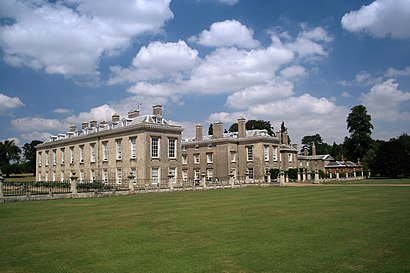See Althorp, Daventry, on the map
Directions to Althorp (Daventry) with public transport
The following transport lines have routes that pass near Althorp
Bus:
How to get to Althorp by Bus?
Click on the Bus route to see step by step directions with maps, line arrival times and updated time schedules.
Which Bus lines stop near Althorp?
These Bus lines stop near Althorp: 96
What time is the first Bus to Althorp in Daventry?
The 96 is the first Bus that goes to Althorp in Daventry. It stops nearby at 06:45.
What time is the last Bus to Althorp in Daventry?
The 96 is the last Bus that goes to Althorp in Daventry. It stops nearby at 21:03.
See Althorp, Daventry, on the map

Public Transit to Althorp in Daventry
Wondering how to get to Althorp in Daventry, United Kingdom? Moovit helps you find the best way to get to Althorp with step-by-step directions from the nearest public transit station.
Moovit provides free maps and live directions to help you navigate through your city. View schedules, routes, timetables, and find out how long does it take to get to Althorp in real time.
Bus:
Want to see if there’s another route that gets you there at an earlier time? Moovit helps you find alternative routes or times. Get directions from and directions to Althorp easily from the Moovit App or Website.
We make riding to Althorp easy, which is why over 1.5 million users, including users in Daventry, trust Moovit as the best app for public transit. You don’t need to download an individual bus app or train app, Moovit is your all-in-one transit app that helps you find the best bus time or train time available.
For information on prices of Bus, costs and ride fares to Althorp, please check the Moovit app.
Use the app to navigate to popular places including to the airport, hospital, stadium, grocery store, mall, coffee shop, school, college, and university.
Althorp Address: Althorp Road street in Daventry

Attractions near Althorp
- Railway Cottages
- Church Brampton Station
- Ewm
- Harlestone Firs
- Harlestone Car Valeting
- Cafemonde
- Roman ORIGINALS
- Antler
- Jack Kelly Brickwork
- The Wilde Group
- Wooden Supplies
- Sainsbury's Food Hall
- Edinburgh Woollen Mill
- HFS Timber
- Harlestone Quarry
- Wyevale
- Dobbies Garden Centre
- St. Botolph's Church
- Harlestone Firs
- Cafe Monde
How to get to popular attractions in Daventry with public transportation
- Bradlaugh Fields, Northampton
- The Observatory (Wetherspoon), Erewash
- Wyberton, Boston
- Fosse Shopping Park, Blaby
- Bagworth, Hinckley And Bosworth
- Bassett Lowke Halls, Northampton
- Sinfin, Derby
- Barlborough, Bolsover
- Riverside Retail Park, Northampton
- Bilborough College, Nottingham
- Colwick Country Park, Nottingham
- Outwood Academy Newbold, Chesterfield
- Francis Crick House, Northampton
- Kettering General Hospital, Kettering
- Gedling, Gedling
- Matalan, Corby
- Burton Latimer, Kettering
- Ikea, Broxtowe
- Idlewells Shopping Centre, Ashfield
- E.ON (Bilborough), Nottingham